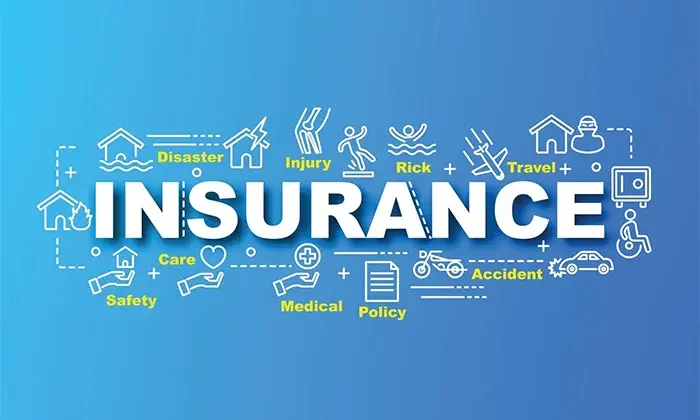Billing insurance as a provider involves multiple steps and a thorough understanding of the processes and requirements involved. Accurate and efficient insurance billing is crucial for the financial health of healthcare practices. This article provides a comprehensive guide on how to bill insurance as a provider, covering essential steps, best practices, and common challenges.
Understanding Insurance Billing
Importance of Accurate Billing
Accurate billing ensures timely reimbursement for services provided. It helps maintain the financial stability of healthcare practices and reduces the likelihood of claim denials and audits.
Financial Health: Proper billing practices ensure steady cash flow.
Compliance: Adhering to billing regulations helps avoid legal issues and penalties.
Patient Satisfaction: Efficient billing processes can enhance patient satisfaction by minimizing billing errors.
Types of Insurance Plans
Providers need to understand the different types of insurance plans they might encounter.
Private Insurance: Plans offered by private insurance companies.
Medicare: Federal insurance program for people aged 65 and older, and some younger people with disabilities.
Medicaid: State and federal program providing health coverage for low-income individuals and families.
Employer-Sponsored Insurance: Health insurance provided by employers to their employees.
See Also: How To Get Cheap Car Insurance As A New Driver?
Steps to Bill Insurance
Step 1: Verify Patient Insurance
Collect Insurance Information
Collect comprehensive insurance information from the patient at the time of the appointment.
- Insurance Card: Obtain a copy of the patient’s insurance card.
- Personal Information: Verify personal details like name, date of birth, and contact information.
- Policy Details: Confirm policy number, group number, and coverage dates.
Verify Coverage
Contact the insurance company to verify the patient’s coverage and eligibility for the services to be provided.
- Online Verification: Use online portals provided by insurance companies.
- Phone Verification: Call the insurance company to confirm coverage details.
- Pre-Authorization: Obtain pre-authorization if required for certain procedures or services.
Step 2: Document Services Provided
Maintain Accurate Records
Document all services provided during the patient visit accurately and comprehensively.
- Procedure Codes: Use appropriate CPT (Current Procedural Terminology) codes for procedures.
- Diagnosis Codes: Apply correct ICD-10 (International Classification of Diseases) codes for diagnoses.
- Detailed Notes: Keep detailed notes on the services provided, including any additional treatments or follow-ups.
Use Electronic Health Records (EHR)
Utilize Electronic Health Records (EHR) systems to maintain accurate and organized patient records.
- EHR Systems: Implement EHR systems that integrate with billing software.
- Digital Records: Ensure all patient interactions and treatments are recorded digitally for easy access and reference.
Step 3: Prepare the Insurance Claim
Use Standardized Claim Forms
Use standardized claim forms such as the CMS-1500 for outpatient services or the UB-04 for inpatient services.
- CMS-1500: Used for billing physician and outpatient services.
- UB-04: Used for billing hospital and inpatient services.
Complete the Claim Form
Accurately complete the claim form with all required information.
- Patient Information: Include patient’s personal and insurance details.
- Provider Information: Enter provider’s details, including National Provider Identifier (NPI).
- Service Details: Provide detailed information about the services rendered, including dates, codes, and charges.
Step 4: Submit the Claim
Electronic Claim Submission
Submit claims electronically for faster processing and tracking.
- EDI (Electronic Data Interchange): Use EDI systems to submit claims to insurance companies.
- Clearinghouses: Utilize clearinghouses to submit claims to multiple insurers simultaneously.
Paper Claim Submission
- If electronic submission is not possible, submit paper claims to the insurance company.
Mailing: Ensure claims are mailed to the correct address.
- Tracking: Keep a record of mailed claims for tracking purposes.
Step 5: Follow Up on Claims
Monitor Claim Status
Regularly check the status of submitted claims to ensure timely processing.
- Online Portals: Use insurer’s online portals to track claim status.
- Follow-Up Calls: Make follow-up calls to insurance companies if claims are delayed.
Address Denied Claims
Handle denied claims promptly by understanding the reason for denial and taking corrective action.
- Denial Codes: Review denial codes provided by the insurer.
- Appeals: File an appeal if the denial is unjustified, providing additional information or corrections as needed.
Step 6: Receive and Post Payments
Receive Payments
Monitor payments received from insurance companies and patients.
- Electronic Funds Transfer (EFT): Set up EFT for quicker payment receipt.
- Check Payments: Process check payments promptly.
Post Payments
Post payments to the patient’s account accurately.
- EOB (Explanation of Benefits): Use EOB statements to match payments with claims.
- Adjustments: Make necessary adjustments for co-pays, deductibles, and insurance write-offs.
Step 7: Handle Patient Billing
Send Patient Statements
Send billing statements to patients for any outstanding balances.
- Itemized Statements: Provide detailed itemized statements showing services, insurance payments, and patient responsibility.
- Payment Plans: Offer payment plans if patients are unable to pay the full balance immediately.
Manage Collections
Implement a collections process for overdue accounts.
- Follow-Up: Send follow-up reminders for unpaid balances.
- Collections Agencies: Consider using collections agencies for long-overdue accounts.
Best Practices for Insurance Billing
Stay Informed on Regulations
Compliance with Laws
Stay updated on federal, state, and payer-specific regulations.
- HIPAA: Ensure compliance with the Health Insurance Portability and Accountability Act.
- State Laws: Understand and comply with state-specific insurance regulations.
Regular Training
Provide regular training for billing staff on the latest billing practices and regulations.
- Workshops: Attend workshops and webinars.
- Certifications: Encourage staff to obtain certifications in medical billing and coding.
Utilize Technology
Billing Software
Invest in reliable billing software to streamline the billing process.
- Integrated Systems: Use billing software that integrates with EHR and practice management systems.
- Automation: Automate routine tasks like claim submission and follow-ups.
Data Security
Ensure the security of patient data in compliance with HIPAA regulations.
- Encryption: Use encryption to protect sensitive data.
- Access Controls: Implement access controls to limit data access to authorized personnel only.
Maintain Clear Communication
With Patients
Communicate clearly with patients about their insurance coverage and billing responsibilities.
- Pre-Visit Communication: Inform patients about coverage and potential out-of-pocket costs before their visit.
- Post-Visit Follow-Up: Provide clear explanations of billing statements and charges.
With Insurance Companies
Establish effective communication channels with insurance companies.
- Point of Contact: Have a dedicated contact person for dealing with insurance companies.
- Regular Updates: Keep insurers informed of any changes in provider information or services offered.
Regular Audits
Internal Audits
Conduct regular internal audits to ensure billing accuracy and compliance.
- Spot Checks: Perform spot checks on random claims.
- Error Analysis: Analyze common errors and implement corrective measures.
External Audits
Consider periodic external audits for an objective review of billing practices.
- Consultants: Hire consultants to conduct comprehensive audits.
- Benchmarking: Use audit results to benchmark against industry standards.
Common Challenges in Insurance Billing
Claim Denials
Reasons for Denials
Understand common reasons for claim denials to minimize their occurrence.
- Incorrect Information: Errors in patient or provider information.
- Coding Errors: Incorrect or incomplete coding.
- Authorization Issues: Lack of required pre-authorization.
Addressing Denials
Develop a systematic approach to address claim denials.
- Denial Management: Implement a denial management process.
- Root Cause Analysis: Identify root causes of denials and take corrective action.
Keeping Up with Changes
Regulatory Changes
Stay updated on changes in regulations and payer requirements.
- Industry Updates: Subscribe to industry newsletters and updates.
- Professional Associations: Join professional associations for access to the latest information.
Technology Advancements
Adopt new technologies to improve billing efficiency and accuracy.
- Software Upgrades: Regularly update billing software to the latest versions.
- New Tools: Explore new tools and technologies that can enhance billing processes.
Staff Training and Turnover
Training Programs
Implement continuous training programs for billing staff.
- Onboarding: Provide thorough onboarding training for new hires.
- Ongoing Education: Offer ongoing education opportunities for existing staff.
Managing Turnover
Develop strategies to manage staff turnover and maintain consistency in billing practices.
- Retention Strategies: Implement retention strategies to reduce turnover.
- Knowledge Transfer: Ensure knowledge transfer processes are in place for departing staff.
Conclusion
Billing insurance as a provider is a complex but essential process that requires accuracy, efficiency, and adherence to regulations. By understanding the steps involved, utilizing technology, maintaining clear communication, and addressing common challenges, healthcare providers can ensure timely and accurate reimbursement for their services. Implementing best practices and staying informed about regulatory changes ractice and enhance patient satisfaction.
Related topics:






























